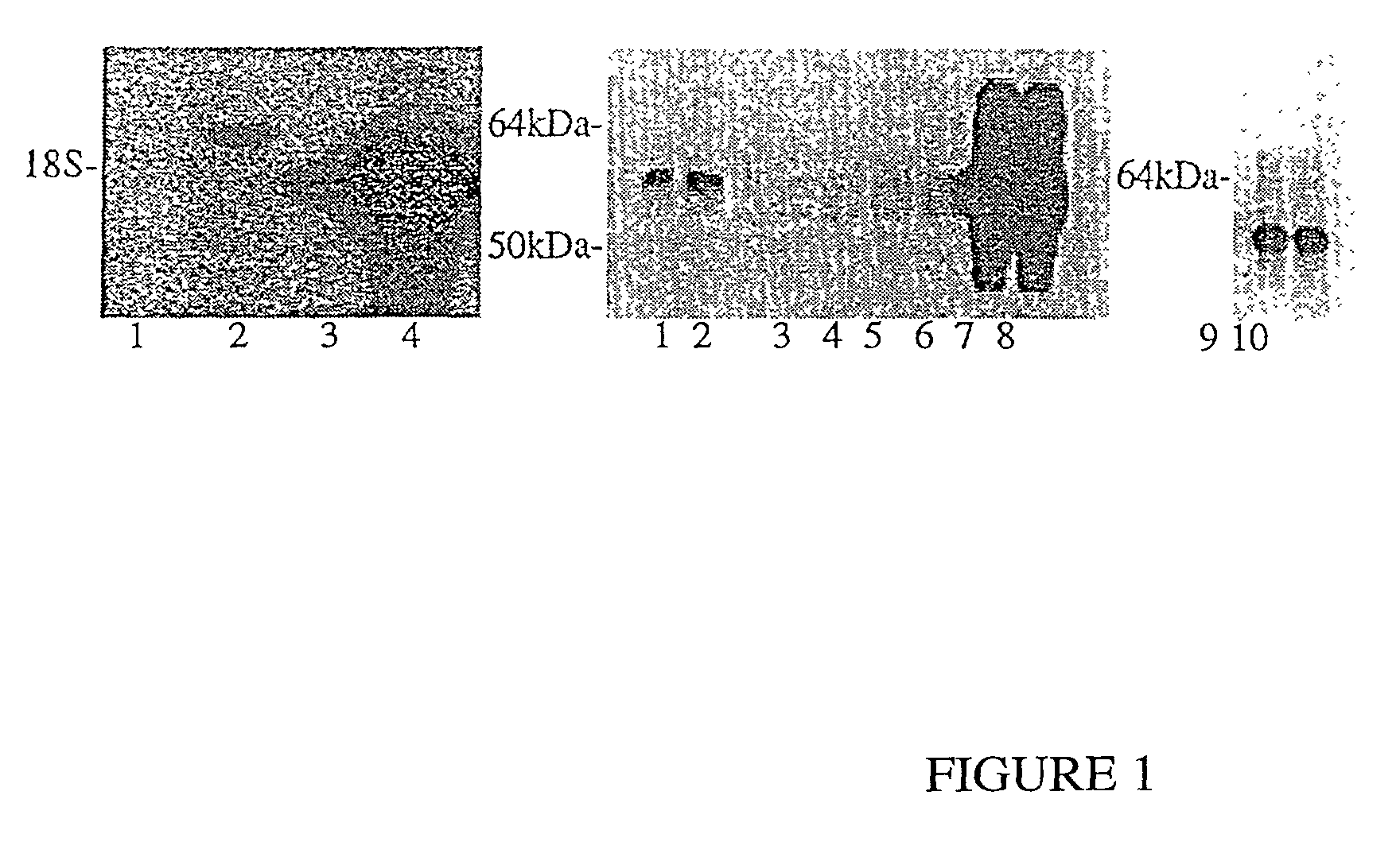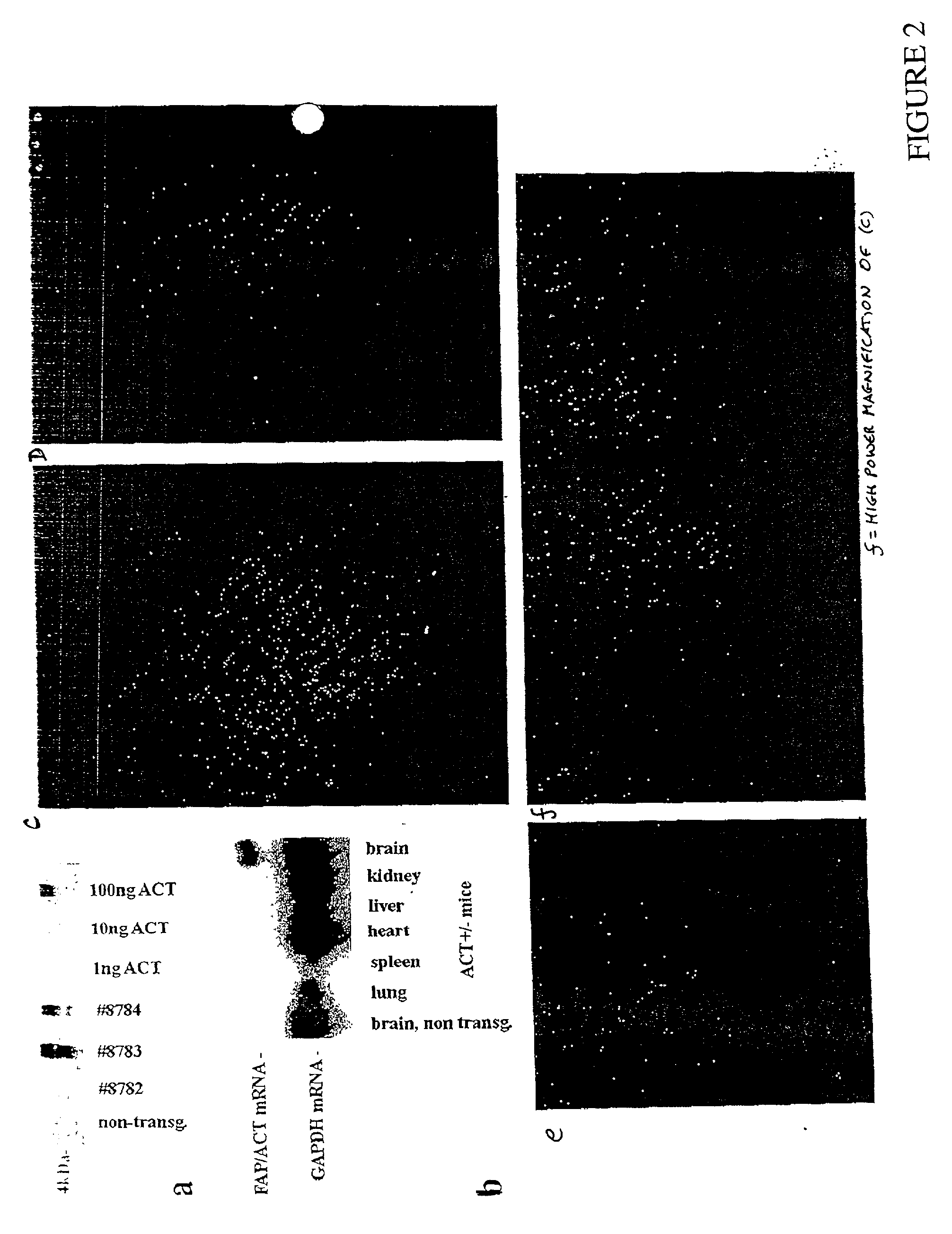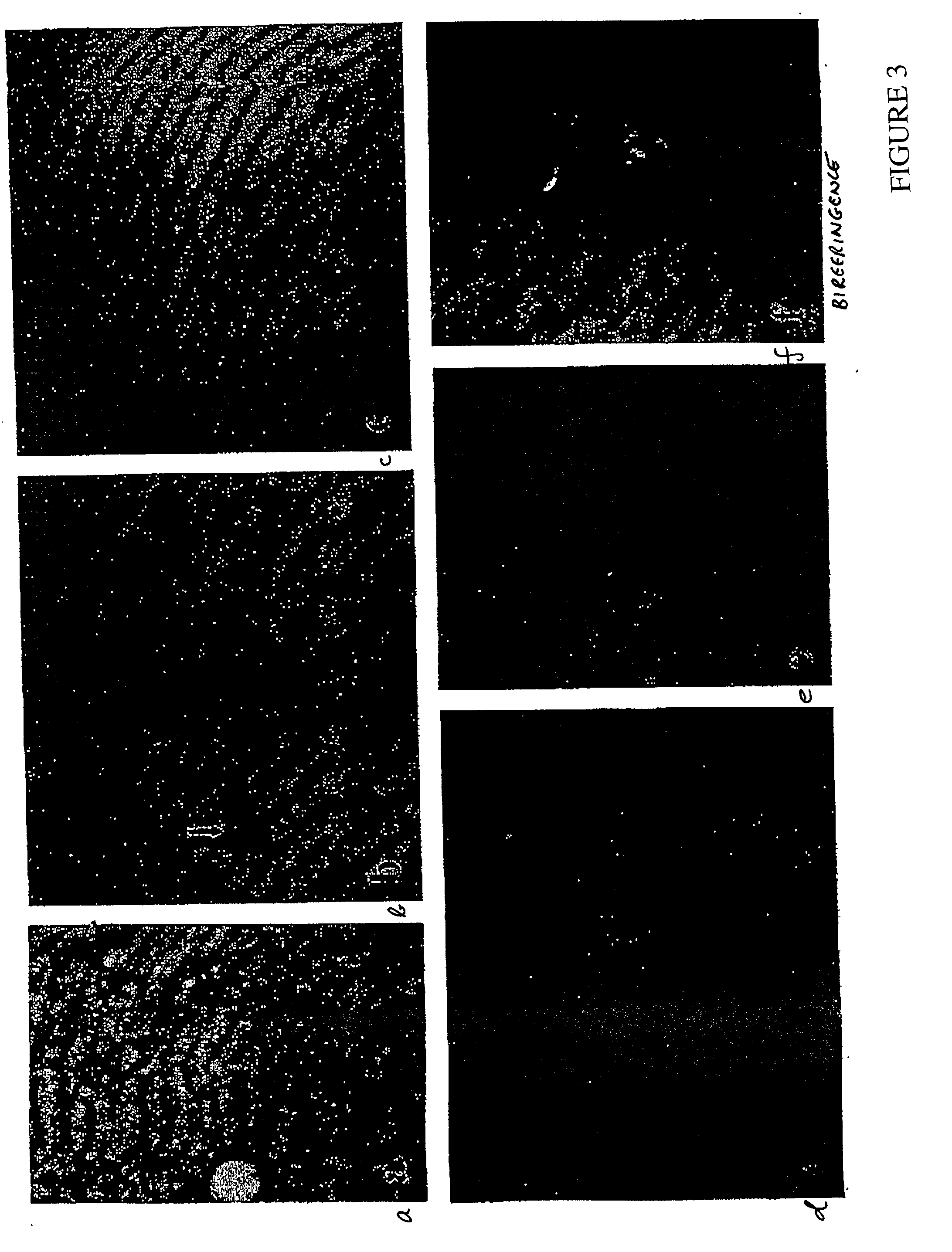Transgenic animal and methods
a technology of transgenic animals and animals, applied in the field of transgenic animal models of alzheimer's disease and related neurological disorders, can solve the problems of increasing the number and length of filaments formed, increasing the toxicity of apoe4 to human cortical neurons in culture, and the current state of the art is still contradictory
- Summary
- Abstract
- Description
- Claims
- Application Information
AI Technical Summary
Benefits of technology
Problems solved by technology
Method used
Image
Examples
example 1
Alpha-1-antichymotrypsin promotes .beta.-sheet Amyloid Plaque Formation in a Transgenic Mouse Model of Alzheimer's Disease
[0132] In this Example, the impact of ACT on .beta.-amyloidosis is shown by generating transgenic GFAP-ACT mice and crossing them with the PDGF-hAPP(V717F) mouse. ACT expression is astrocyte-specific and inducible as previously shown in human brain. Congo-Red positive amyloid deposition is increased in the PDGF-hAPP(V717F).sup.+ / - / ACT.sup.+ / - mice as compared to PDGF-hAPP(V717F).sup.+ / - / ACT.sup.- / - mice, particularly in the hippocampus, where ACT expression is most increased. It is shown herein that ACT exacerbates .beta.-amyloidosis and constitutes a novel therapeutic target.
[0133] In this Example the generation of novel transgenic GFAP-ACT founder lines that mimic the astrocyte-specific, inducible, expression pattern of ACT in the human brain, are shown. One of these founder lines is crossed with the PDGF-hAPP(V717F) transgenic mouse strain to show the pathophy...
example 2
Alpha-1-antichymotrypsin Promotes Cognitive Impairment in a Transgenic Mouse Model of Alzheimer's Disease
[0143] FIGS. 9 and 10 show cognitive impairment of transgenic ACT mice in a novel radial arm water maze test. The controls indicated on FIGS. 9 and 10 represent the strains of the transgenic parental mice and show that in neither case was impairment attributable to the mouse strain. The age of all animals in this example is between 15-17 months. T1, T2, and T5 stand for the first, second and fifth test within a particular day's testing. Specifically, APP / ACT and APP / ApoE knockout / ACT show increased cognitive impairment compared to APP and APP / ApoE knockout mice, respectively. Thus, consistent with the pathological findings of Examples 1 and 2, ACT expression potentiates cognitive impairment, further demonstrating the utility of the present invention as a model for Alzheimer's and other neurological disorders. Furthermore, the pathological chaperones ACT and ApoE are important not...
example 3
Antichymotrypsin Expression Induces Hyperphosporylated Tau, Paired Helical Filaments, Neurofibrillary Tangles and Neuronal Degeneration in a Transgenic Mouse Model of Alzheimer's Disease
[0144] In this Example the involvement of ACT in promoting neurofibrillary pathology and neuronal degeneration. ACT overexpression in astrocytes leads within a few months of birth to the accumulation of abnormal filaments and neurofibrillary tangles containing hyperphosphorylated tau in neurons throughout the brains of the ACT transgenic mice. By a few months of age, clear neurodegeneration had developed. These results show why only human Alzheimer patients develop similar neurofibrillary pathology and neurodegeneraton, in as much as normal mice do not carry a true ACT homologous gene. Furthermore, because ACT overexpression in AD is induced by the inflammatory cytokine IL-1 secreted by activated microglia, the present Example provides a new mechanism by which inflammation functions in the Alzheimer ...
PUM
| Property | Measurement | Unit |
|---|---|---|
| Cell death | aaaaa | aaaaa |
| Acidity | aaaaa | aaaaa |
Abstract
Description
Claims
Application Information
 Login to View More
Login to View More - R&D
- Intellectual Property
- Life Sciences
- Materials
- Tech Scout
- Unparalleled Data Quality
- Higher Quality Content
- 60% Fewer Hallucinations
Browse by: Latest US Patents, China's latest patents, Technical Efficacy Thesaurus, Application Domain, Technology Topic, Popular Technical Reports.
© 2025 PatSnap. All rights reserved.Legal|Privacy policy|Modern Slavery Act Transparency Statement|Sitemap|About US| Contact US: help@patsnap.com



